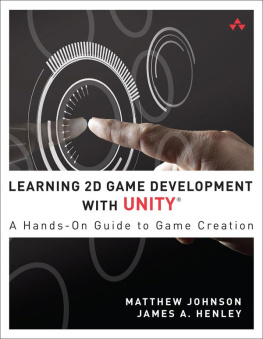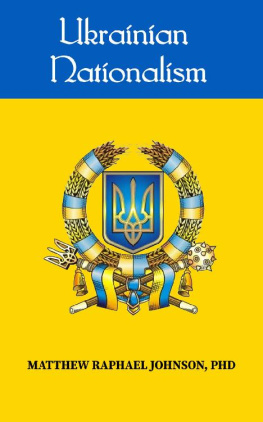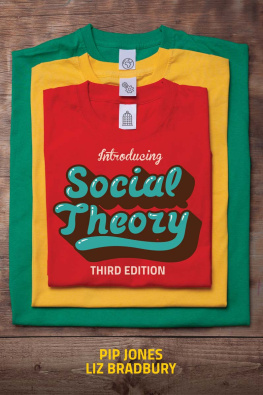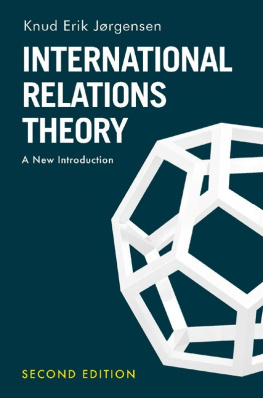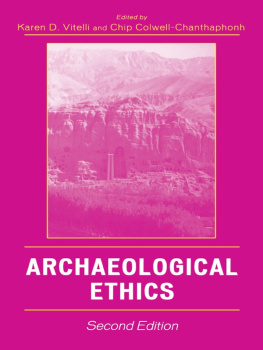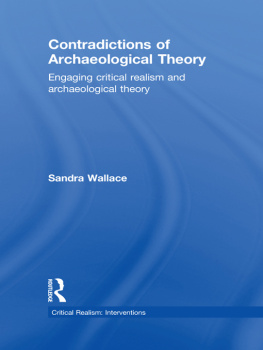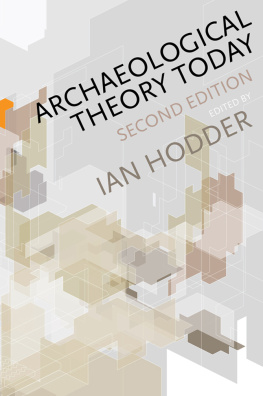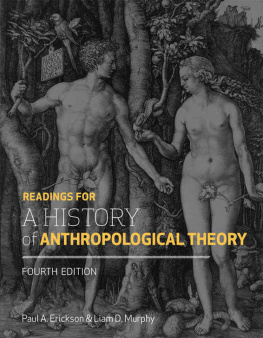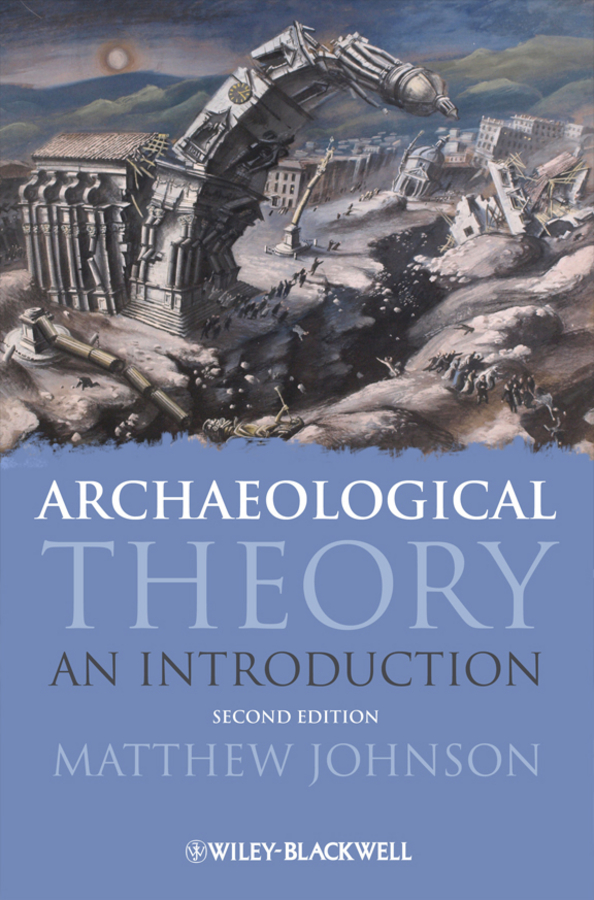Alan Sorrell, Falling Tower, date uncertain. Sorrell (190474) was a neo-Romantic artist known both for his reconstruction drawings of archaeological sites and depictions of past cultural life, and for his imaginative work, which was characteristically inspired by the monuments and images of the past.
For Jo,
who learnt to love theory

This second edition first published 2010
2010 Matthew Johnson
Edition history: Blackwell Publishing Ltd (1e,1999)
Blackwell Publishing was acquired by John Wiley & Sons in February 2007. Blackwells publishing program has been merged with Wileys global Scientific, Technical, and Medical business to form Wiley-Blackwell.
Registered Office
John Wiley & Sons Ltd, The Atrium, Southern Gate, Chichester, West Sussex, PO19 8SQ, United Kingdom
Editorial Offices
350 Main Street, Malden, MA 02148-5020, USA
9600 Garsington Road, Oxford, OX4 2DQ, UK
The Atrium, Southern Gate, Chichester, West Sussex, PO19 8SQ, UK
For details of our global editorial offices, for customer services, and for information about how to apply for permission to reuse the copyright material in this book please see our website at www.wiley.com/wiley-blackwell.
The right of Matthew Johnson to be identified as the author of this work has been asserted in accordance with the UK Copyright, Designs and Patents Act 1988.
All rights reserved. No part of this publication may be reproduced, stored in a retrieval system, or transmitted, in any form or by any means, electronic, mechanical, photocopying, recording or otherwise, except as permitted by the UK Copyright, Designs and Patents Act 1988, without the prior permission of the publisher.
Wiley also publishes its books in a variety of electronic formats. Some content that appears in print may not be available in electronic books.
Designations used by companies to distinguish their products are often claimed as trademarks. All brand names and product names used in this book are trade names, service marks, trademarks or registered trademarks of their respective owners. The publisher is not associated with any product or vendor mentioned in this book. This publication is designed to provide accurate and authoritative information in regard to the subject matter covered. It is sold on the understanding that the publisher is not engaged in rendering professional services. If professional advice or other expert assistance is required, the services of a competent professional should be sought.
Library of Congress Cataloging-in-Publication Data
Johnson, Matthew, 1962
Archaeological theory : an introduction / Matthew Johnson. 2nd ed.
p. cm.
Includes bibliographical references and index.
ISBN 978-1-4051-0014-4 (hardcover : alk. paper) ISBN 978-1-4051-0015-1 (pbk. : alk. paper) 1. ArchaeologyPhilosophy. I. Title.
CC72.J65 2010
930.1dc22
2009039202
List of Figures
Preface: Youre a terrorist? Thank God. I understood Meg to say you were a theorist. From Culler (1997: 16)
| The gulf between present and past |
| Illustration of burial urns from Sir Thomas Browne, Hydriotaphia (1658) |
| Cultures in space and time, from Childe (1929) |
| Piggotts (1968) view of culture |
| David Clarkes (1976) systemic view of culture |
| Glyn Daniels (1941) view of megalith origins |
| Renfrews megaliths on Rousay, Orkney Islands, showing distribution of chambered tombs in relation to modern arable land, with hypothetical territorial boundaries |
| Lon Chaney, Jr and Lionel Atwill in Man Made Monster (1941, Universal) |
| A selective diagram showing some schools within the philosophy of science |
| Present statics, past dynamics and middle-range theory |
| Bordes Mousterian assemblage types, as redrawn by Binford (1983a) |
| Part of Hillmans (1984) ethnoarchaeological model of grain processing, derived from ethnographic research in Turkey |
| David Clarkes (1976) diagram of the normative view of culture |
| A systems model of the rise of civilization in Mesopotamia 78 |
| The results of Hodder and Ortons simulation exercise showing that different spatial processes can produce very similar fall-off curves, implying that this advises great caution in any attempt at interpretation |
| The relationship of theory and data in postprocessual archaeology |
| (a) Carvings from Nmforsen, (b) part of Tilleys structural scheme for interpreting the carvings |
| A medieval hall (after Johnson 1989: figure 2) |
| Prehistoric life according to childrens books. From Unstead (1953: 20) |
| The awl handle excavated by Spectors |
| The elderly Mazaokeyiwin working a hide |
| St George and the Dragon, as depicted on St Georges Altarpiece, National Gallery, Prague, c.1470 |
| A Native American chief, drawn by John White in the 1580s |
| An Ancient Briton, drawn by John White in the 1580s |
| Clarkes contrast between organic and cultural evolution |
| Artists impression of the site of Cahokia at its peak, by William R. Iseminger |
| Charles Darwin, from a cartoon in 1871 |
| An entangled bank, close to Down House, Darwins home |
| William Strata Smiths map of the geology of the British Isles |
| Handaxes from Cuxton, southern England |
| Bodiam Castle |
| Bodiam Castle: plan of landscape context |
| A coffin from the African Burial Ground, New York. The heart shape is made of tacks; it has been interpreted as a west African symbol |
| Archaeological theory in 1988 |
| Archaeological theory in 1998 |
| Archaeological theory in 2008: the struggle between different elements of thought and activity, in the mind of every archaeologist |
Acknowledgements
The author and publishers gratefully acknowledge the following for permission to reproduce copyright material:
Acknowledgements
Preface cartoon Anthony Hadon-Guest; Crown copyright NMR.
The publishers apologize for any errors or omissions in the above list and would be grateful to be notified of any corrections that should be incorporated in the next edition or reprint of this book.
Preface: The Contradictions of Theory
This book is an introductory essay on archaeological theory. It tries to explain something of what theory is, its relationship to archaeological practice, how it has developed within archaeology over the last few decades, and how archaeological thought relates to theory in the human sciences and the intellectual world generally.
To many, theory is a dirty word both within and outside archaeology. Prince Charles earned almost universal approbation when he condemned trendy theorists in education; nobody however, including the Prince himself, seemed to be very clear precisely who he meant. When visiting an archaeological site a few years ago a suggestion of mine met with laughter and the response thats a typical suggestion of a theorist. I dont recall anyone telling me exactly why my suggestion was so absurd, and when I visited the site the following year the strategy had been adopted. For the meat-and-potatoes Anglo-Saxon world in particular, theory is an object of profound suspicion. It is a popular saying that for the English, to be called an intellectual is to be suspected of wanting to steal someones wife (sexism in the original). Theory, political correctness and being foreign stand together in the dock as traits to be regarded with hostility in the Englishspeaking worldand beyond; there is even a word for hostility to theory in German


